NCERT Class 9 Maths Chapter 8 Notes Quadrilaterals - Download PDF
A quadrilateral is a geometrical shape that has four sides and four corners. The sides of quadrilaterals are also called edges, and their corners are called vertices. It is a closed shape with four angles; quadrilaterals are also called polygons. In our daily life, many objects are similar to quadrilaterals. Quadrilaterals are used in graphic design, logos, architecture, like house blueprints, windows, floors, walls, and in everyday objects like paper, electronic devices, picture frames, stationery items, etc.
This Story also Contains
- Class 9 Chapter 8 Quadrilaterals Notes PDF – Download Free Study Material
- NCERT Class 9 Maths Chapter 8 Quadrilaterals Notes
- How to Use the Quadrilaterals Class 9 Notes Effectively?
- NCERT Class 9 Maths Notes – Chapter-Wise Links
- NCERT Books and Syllabus
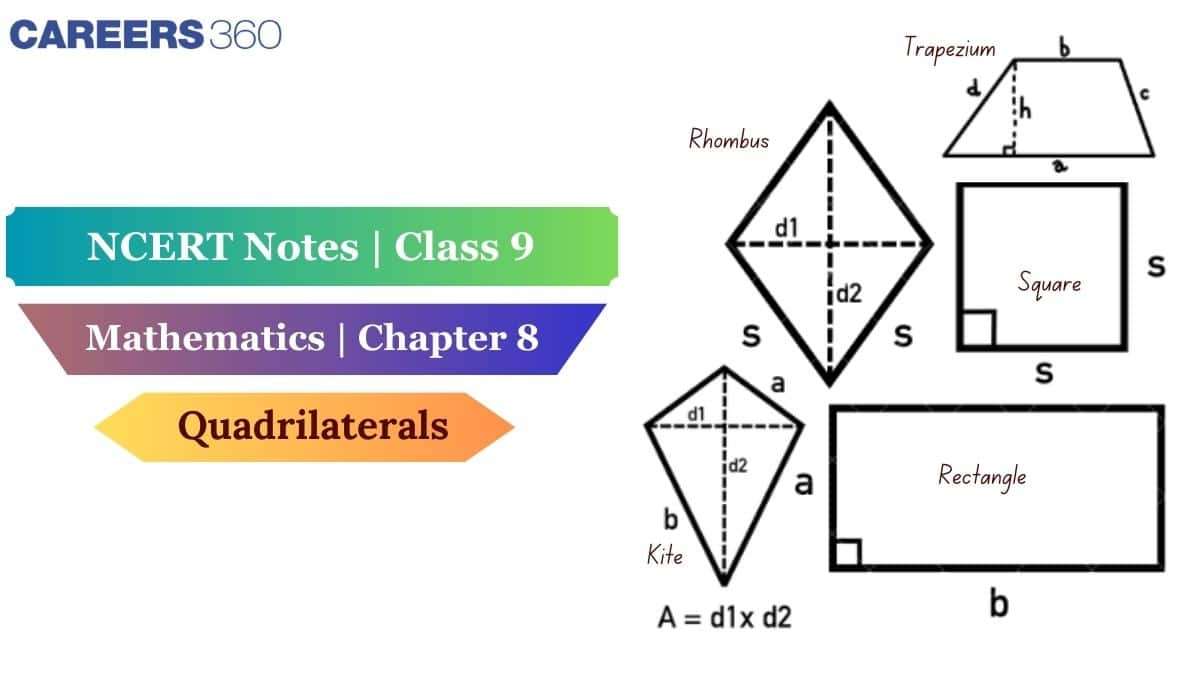
These notes cover different types of quadrilaterals and theorems related to opposite sides of parallelograms, properties of diagonals, diagonals of the rhombus, etc. CBSE Class 9 chapter includes examples for the given topics as required. NCERT class 9th maths notes include all the definitions, formulas, and examples and all related theorems. Students can download the NCERT notes according to their subjects and standard, which will help to understand all the required concepts in a single place.
Also, read,
Class 9 Chapter 8 Quadrilaterals Notes PDF – Download Free Study Material
Careers360 brings you NCERT Class 9 Maths Chapter 8 Quadrilaterals notes, carefully prepared by subject experts to simplify your studies and help in exams. A downloadable PDF is available — click the link below to access it.
NCERT Class 9 Maths Chapter 8 Quadrilaterals Notes
These NCERT notes for Class 9 Maths Chapter 8 Quadrilaterals have been prepared by Careers360 experts to make learning simpler and to help you score better in exams.
Quadrilateral
The quadrilateral combines two Latin words, "quadri" and "latus"; quadri means a variant of four and latus means sides. So, the word quadrilateral implies that a shape has four sides.
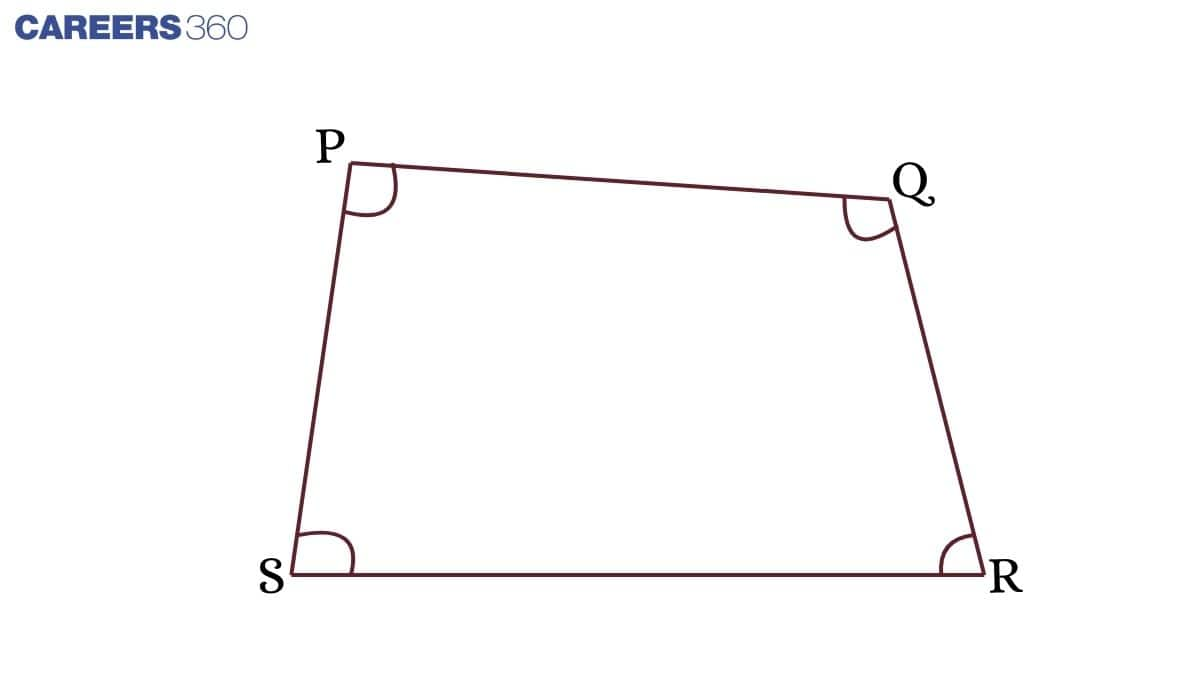
Types of Quadrilaterals:
There are the following types of quadrilaterals -
1. Parallelogram
2. Trapezium
3. Rectangle
4. Square
5. Rhombus
6. Kite
Parallelogram: A parallelogram is a quadrilateral in which opposite sides are parallel and equal to each other.
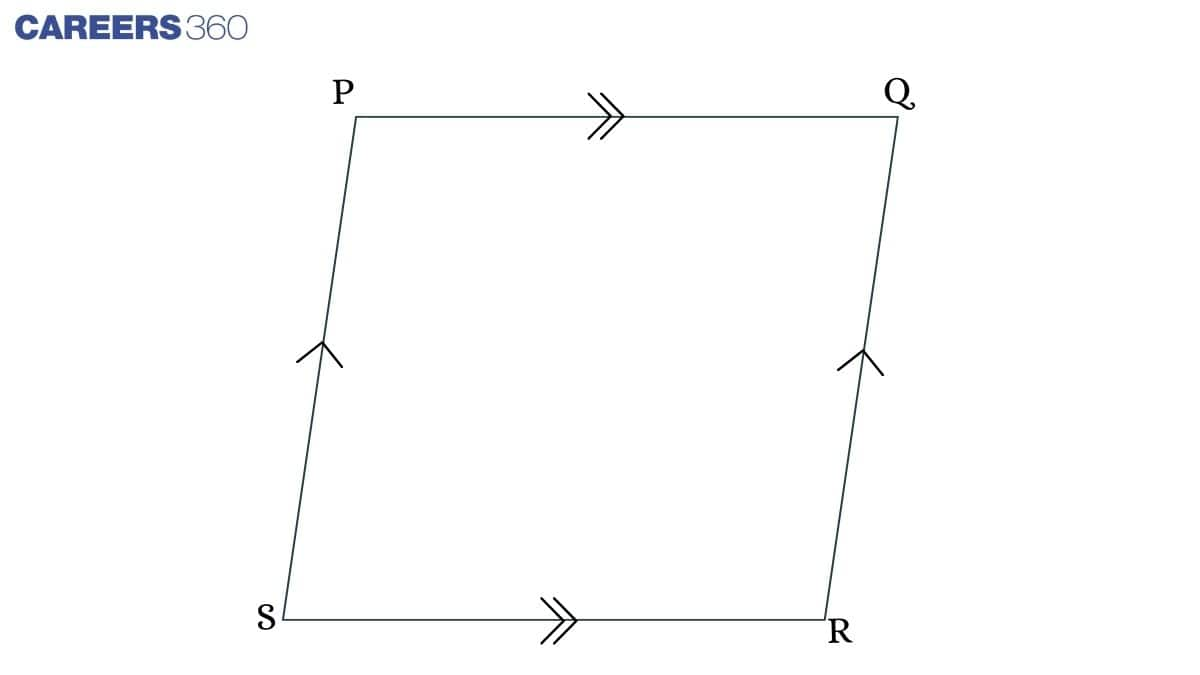
Trapezium: A quadrilateral in which any two sides are parallel is called a trapezium.
Theorem: The opposite sides of a parallelogram are equal.
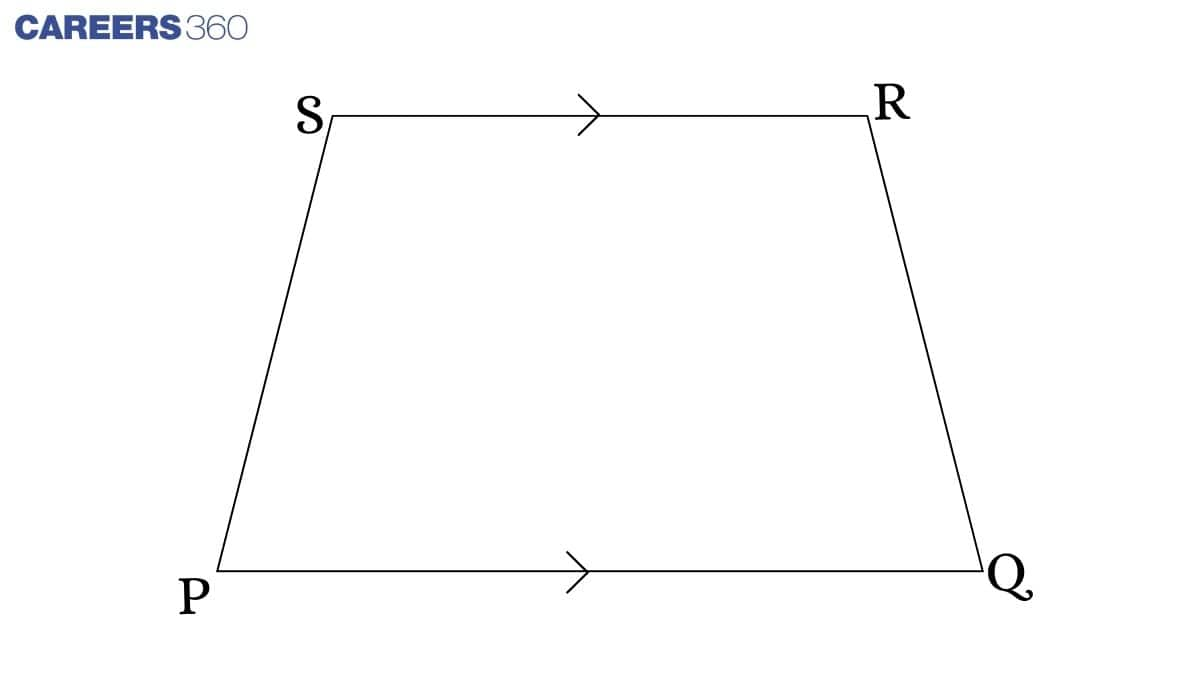
Rectangle: A quadrilateral in which two opposite sides are equal, as well as all the angles are right angles.
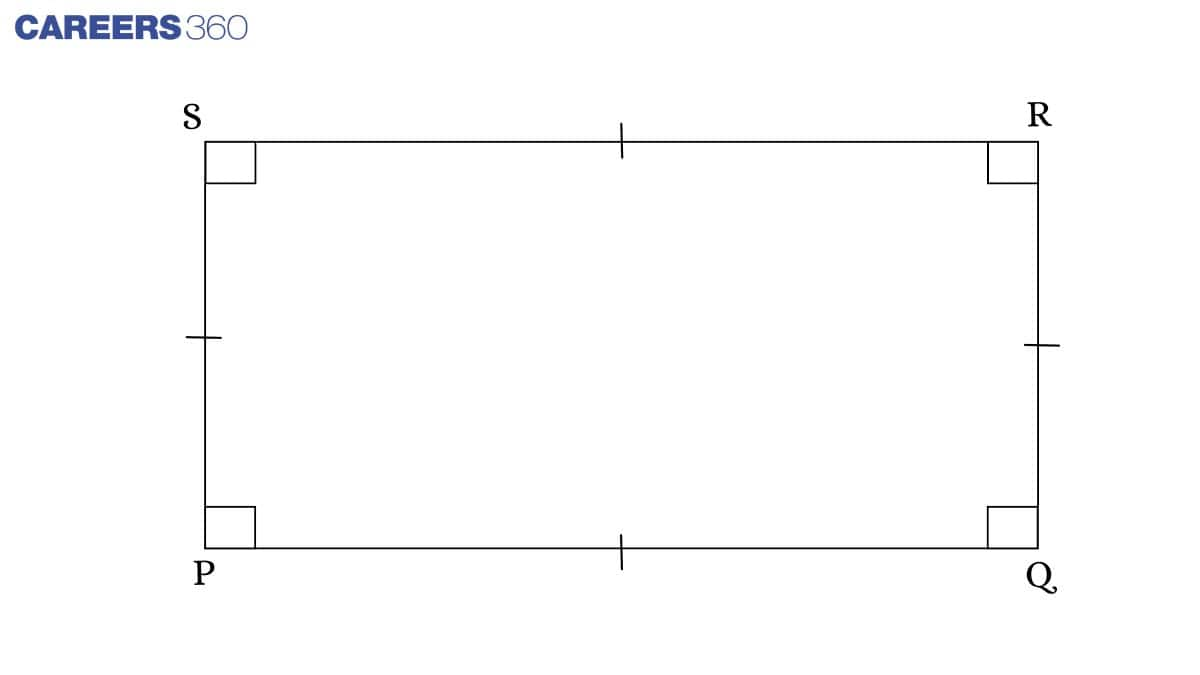
Square: It is a type of parallelogram in which all the angles are right angles and all sides are equal.
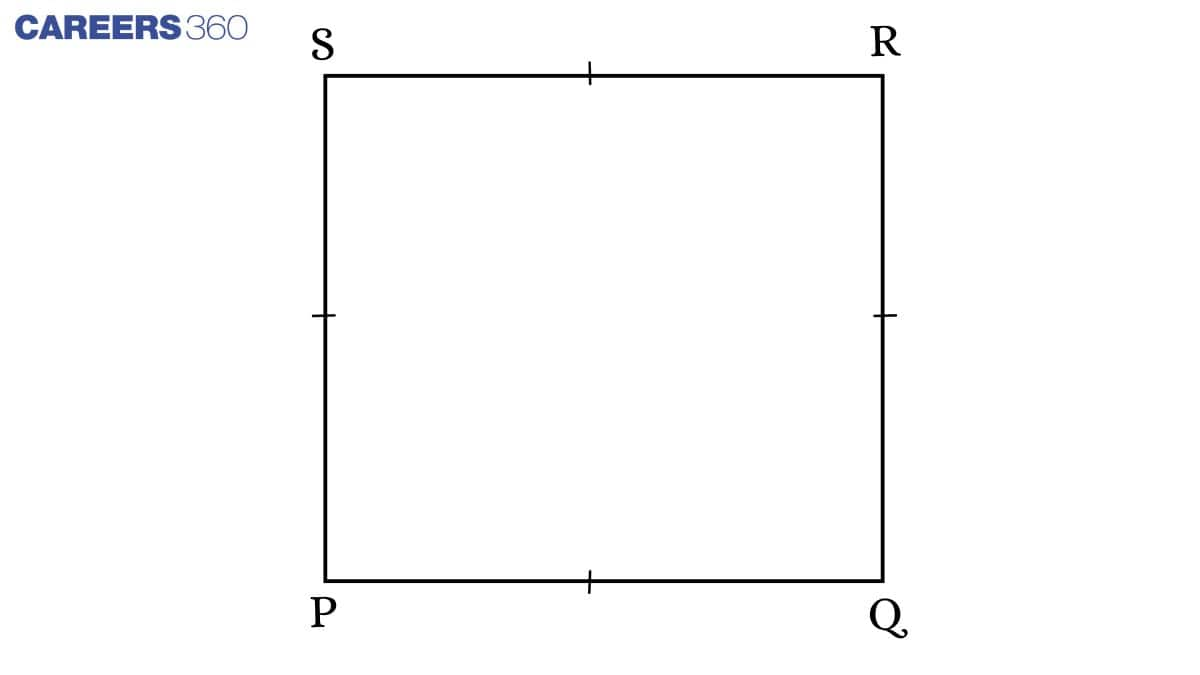
Rhombus: A rhombus is a parallelogram in which all the sides are equal and the diagonals perpendicularly bisect each other.
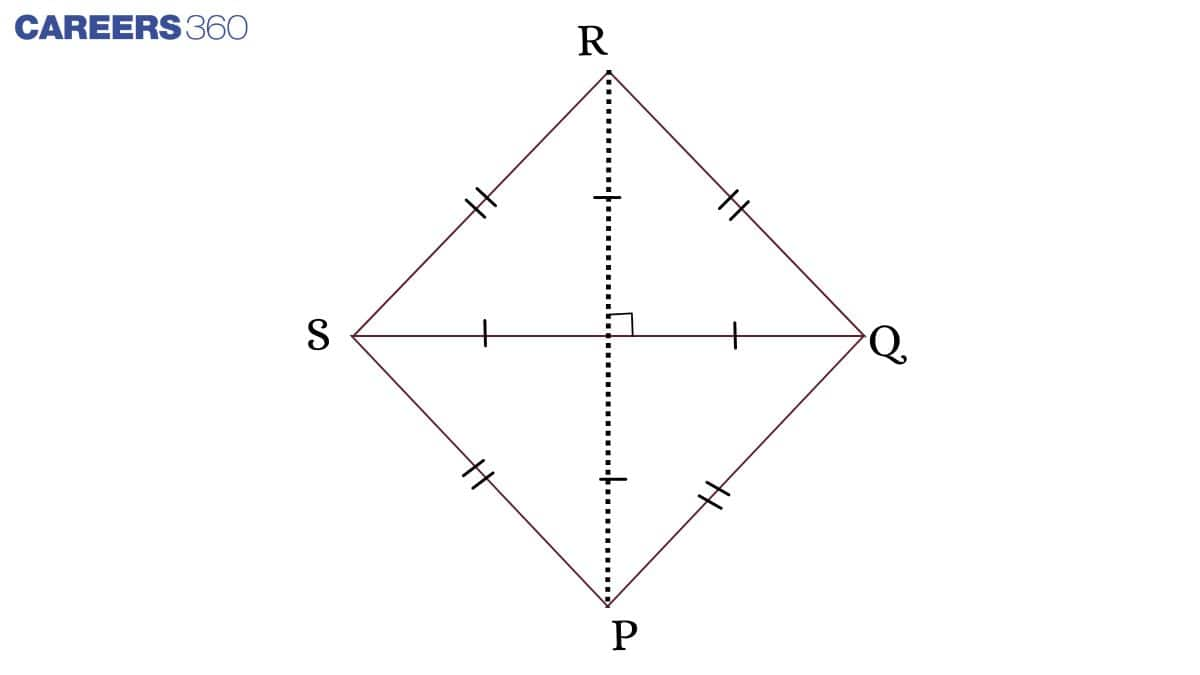
Kite: A quadrilateral in which adjacent sides are equal is called a kite.
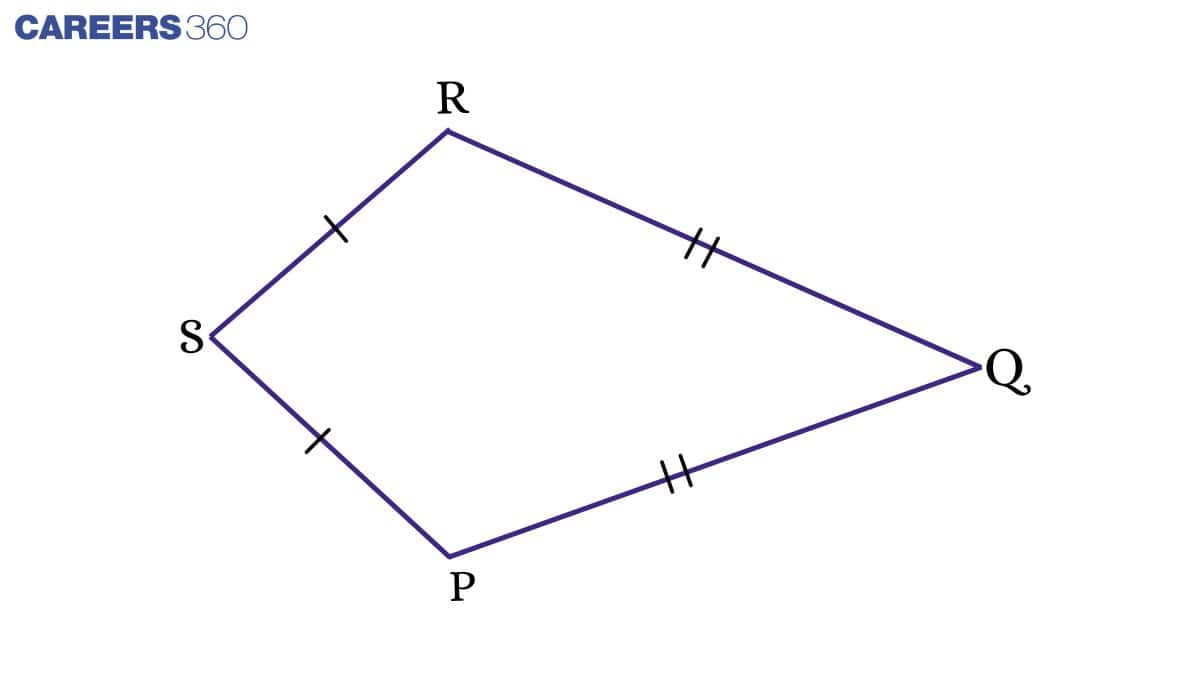
Theorem: In a parallelogram, opposite sides are equal.
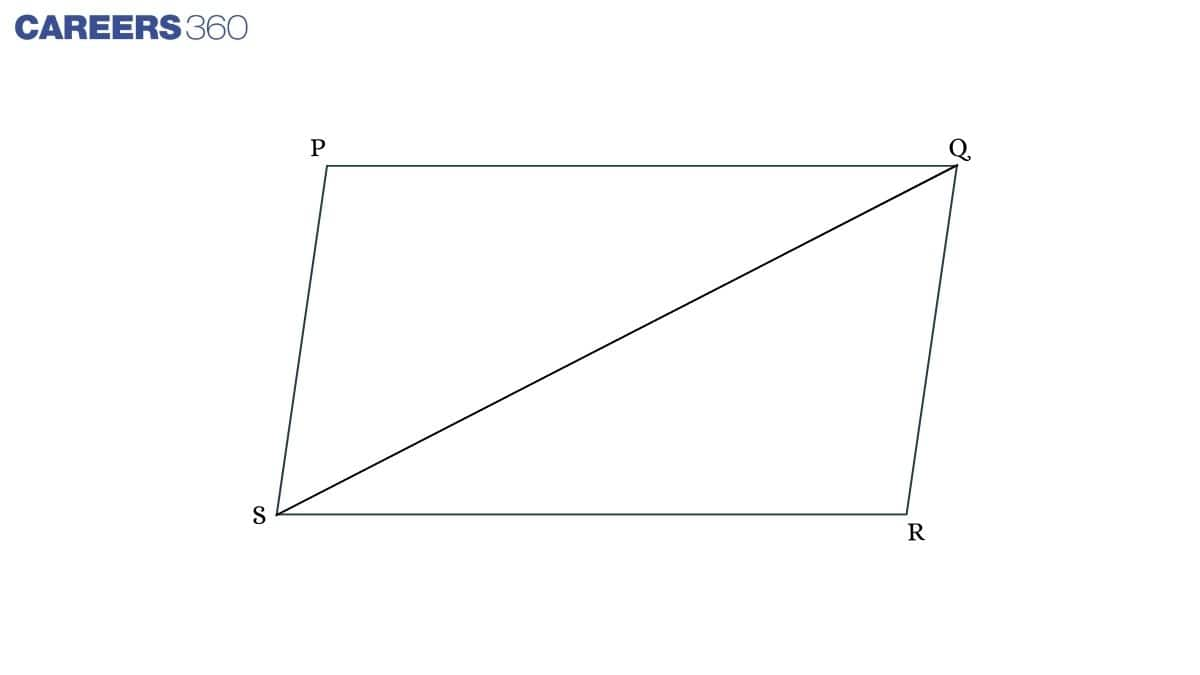
Let there be a diagonal that joins Q and S.
In ΔPQS and ΔQRS
∠PQS = ∠QSR (Alternate angles)
QS = QS (Common)
∠PSQ = ∠RQS (Alternate angles)
ΔPQS≅ΔQRS (ASA rule)
Hence, PQ = RS and PS = QR.
Theorem: In a parallelogram, opposite angles are equal.
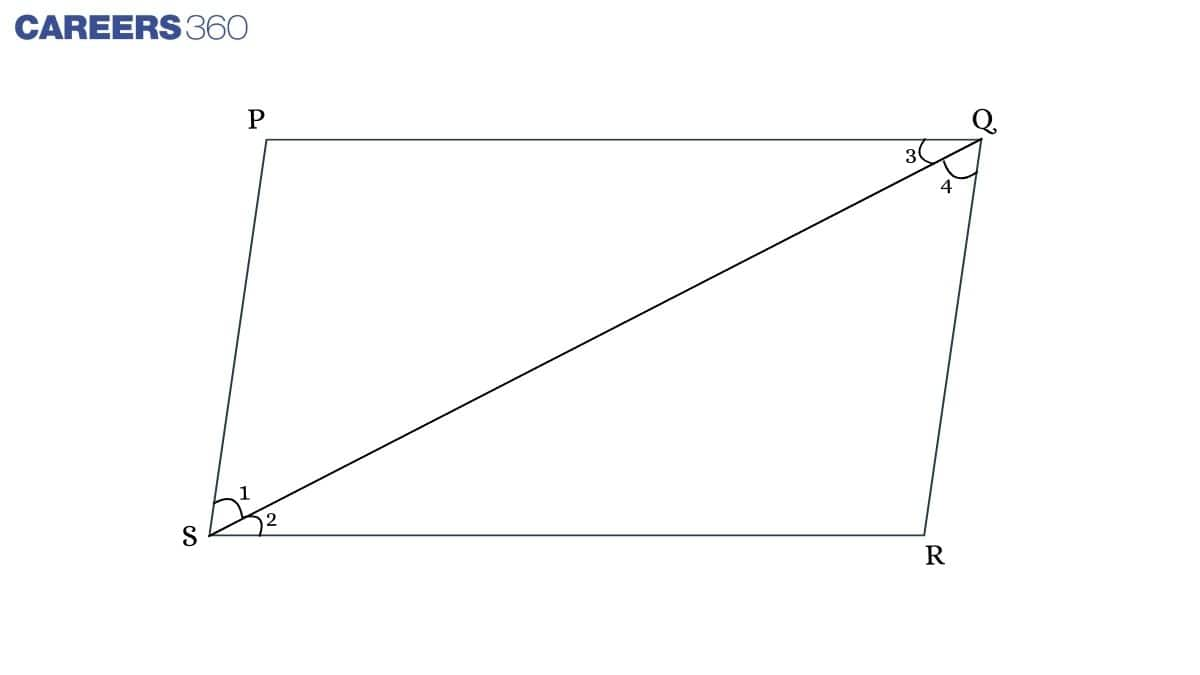
In parallelogram PQRS∠1 = ∠4 (PS || QR) .... (1)
∠2 = ∠3 (PQ || SR) ..... (2)
After adding equations (1) and (2), we get,
∠1 + ∠2 = ∠4 + ∠3
∠PSR = ∠PQR
Similarly, ∠QPS = ∠QRS
Theorem: If the diagonals of a quadrilateral bisect each other, then it is a parallelogram.
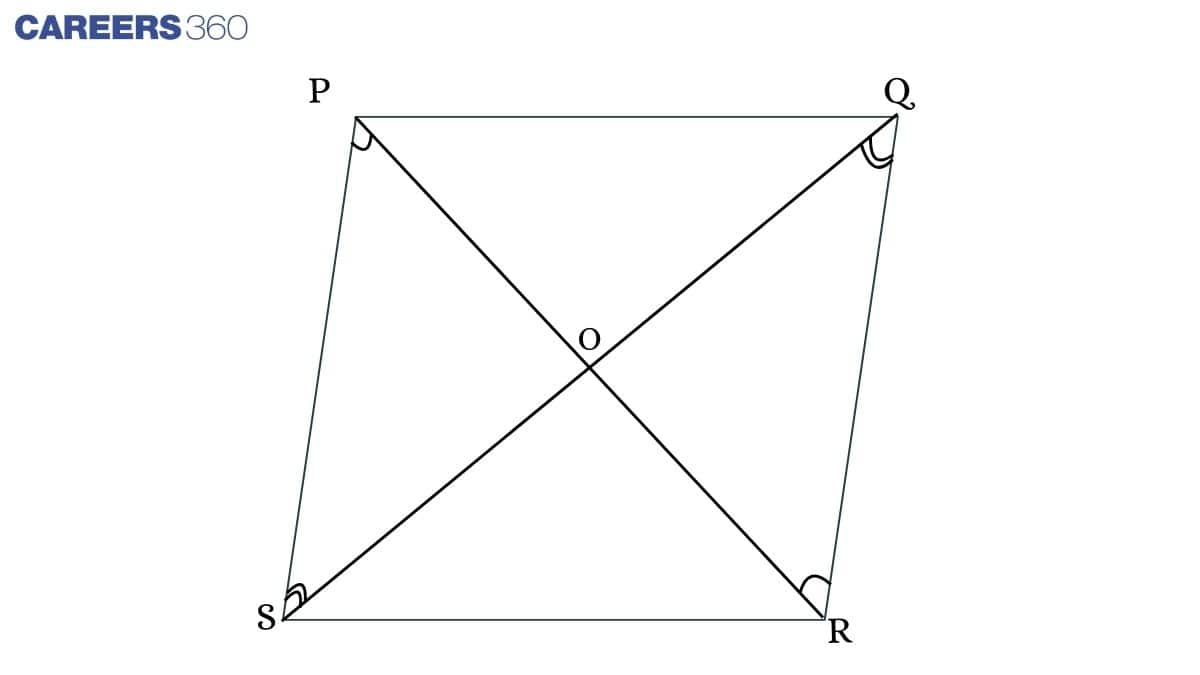
In ΔQOR and ΔPOS,
∠SPO = ∠ORQ (Alternate angles)
∠PSO = ∠OQR (Alternate angles)
PS = QR (Opposite sides of a parallelogram)
ΔQOR ≅ ΔPOS (AAS rule)
Therefore, PO = OR and SO = OQ
Theorem: The diagonal of a parallelogram divides it into two congruent triangles.
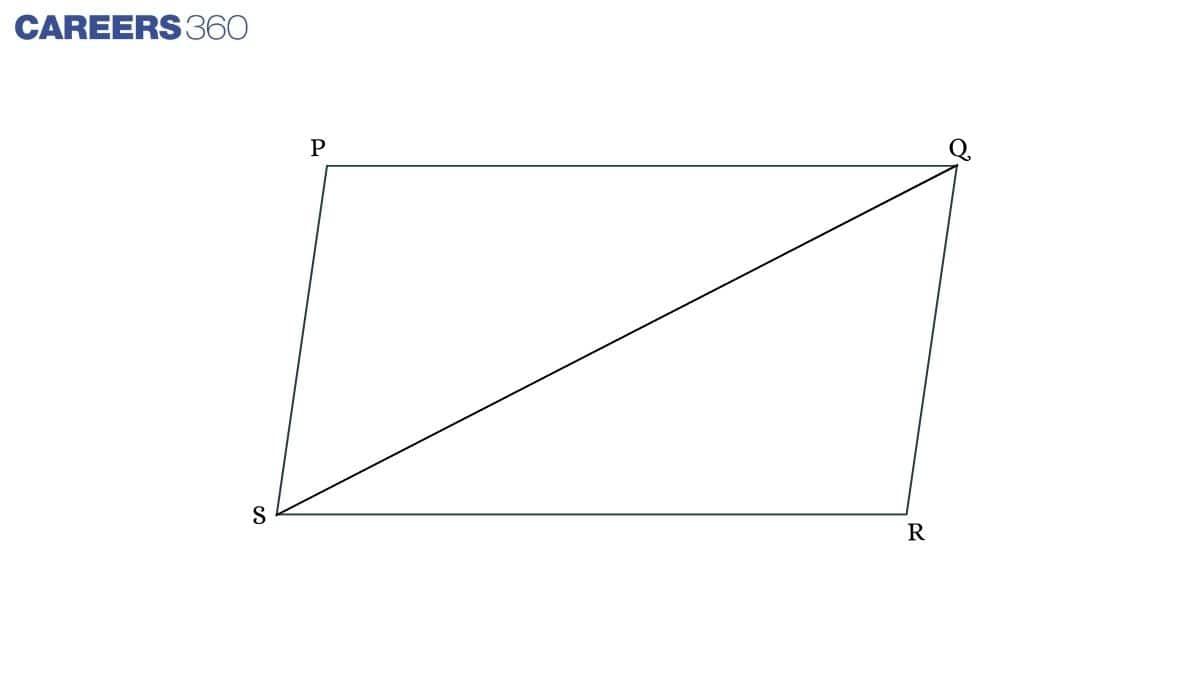
In ΔPQS and ΔQRS,
PQ = RS (Opposite sides of a parallelogram)
PS = QR (Opposite sides of a parallelogram)
QS = QS (Common side in both triangles)
ΔPQS ≅ ΔQRS (By SSS rule)
Theorem: The diagonals of a rhombus bisect each other at right angles.
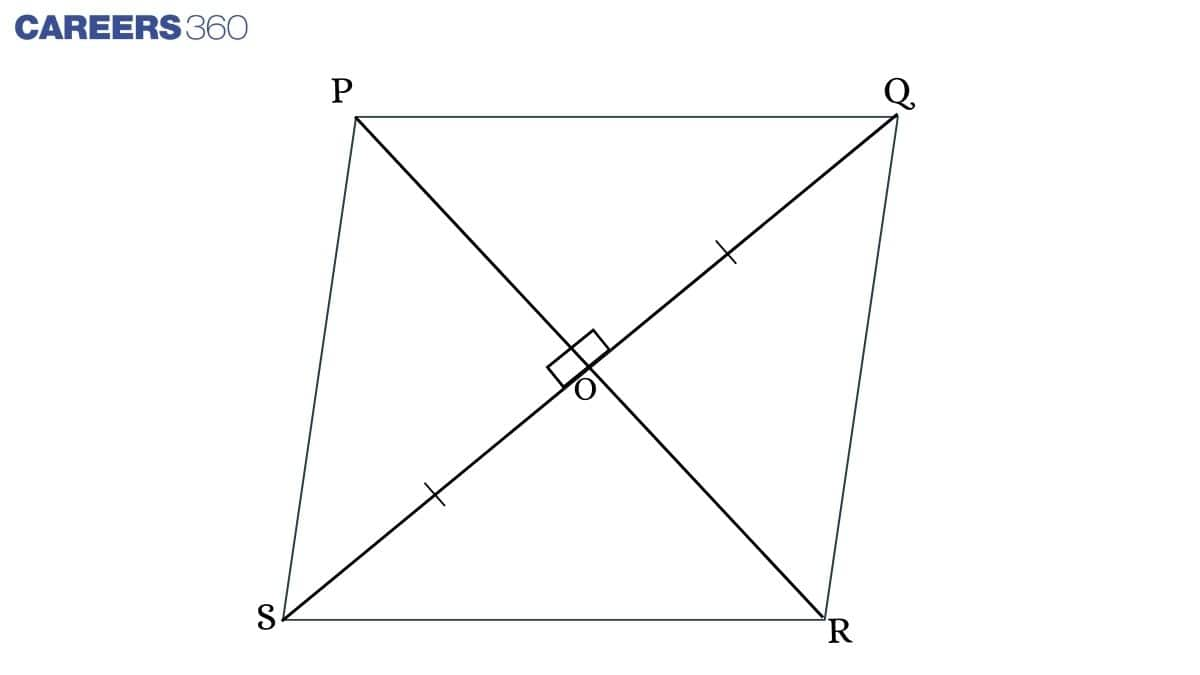
In ΔSOP and ΔPOQ,
PS = PQ (Adjacent sides of a rhombus)
PO = PO (Common side)
SO = OQ (Diagonals of a parallelogram that bisect each other)
ΔSOP ≅ΔPOQ (By SSS rule)
Therefore, ∠SOP =∠POQ ... (1)
∠SOP +∠POQ =180° (∵ Angle in a straight line is 180°)
From equation (1),
∠SOP +∠SOP =180°
∠SOP = 90°
Similarly, ∠SOP = ∠POQ = 90°
Theorem: The diagonals of a rectangle bisect each other and are equal.
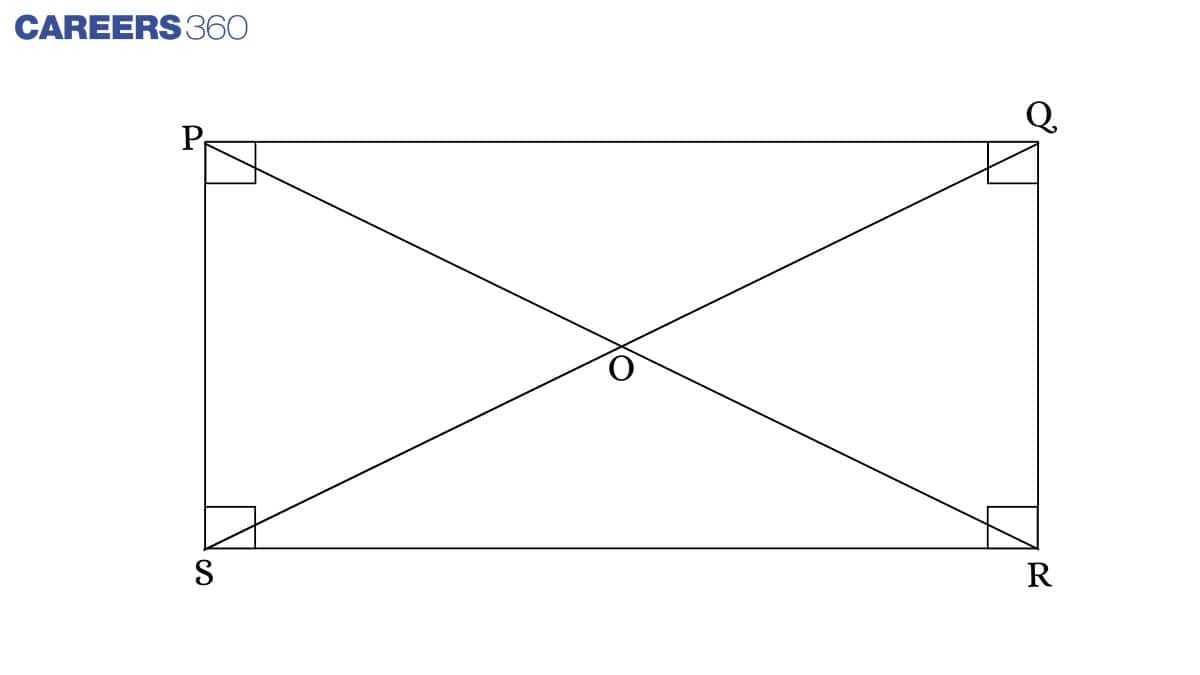
In ΔPSQ and ΔRSQ,
PS = QR (Opposite sides of a rectangle)
PQ = SR (Opposite sides of a rectangle)
∠SPQ = ∠SRQ (Angles of rectangle are 90°)
ΔPSQ ≅ΔRSQ (By SAS rule)
∴SQ = PR (Corresponding parts of congruent triangles)
Now, in ΔPOS and ΔQOR,
∠OSP = ∠OQR (∵ PS||QR)
∠SPO=∠ORQ (∵ AD||BC)
PS = QR (Opposite sides of a rectangle)
ΔPOS ≅ΔQOR (By ASA rule)
Therefore, SO = OQ (Corresponding parts of congruent triangles)
Similarly, we can prove PO = OR.
Theorem: The diagonals of a square bisect each other at right angles and are equal.
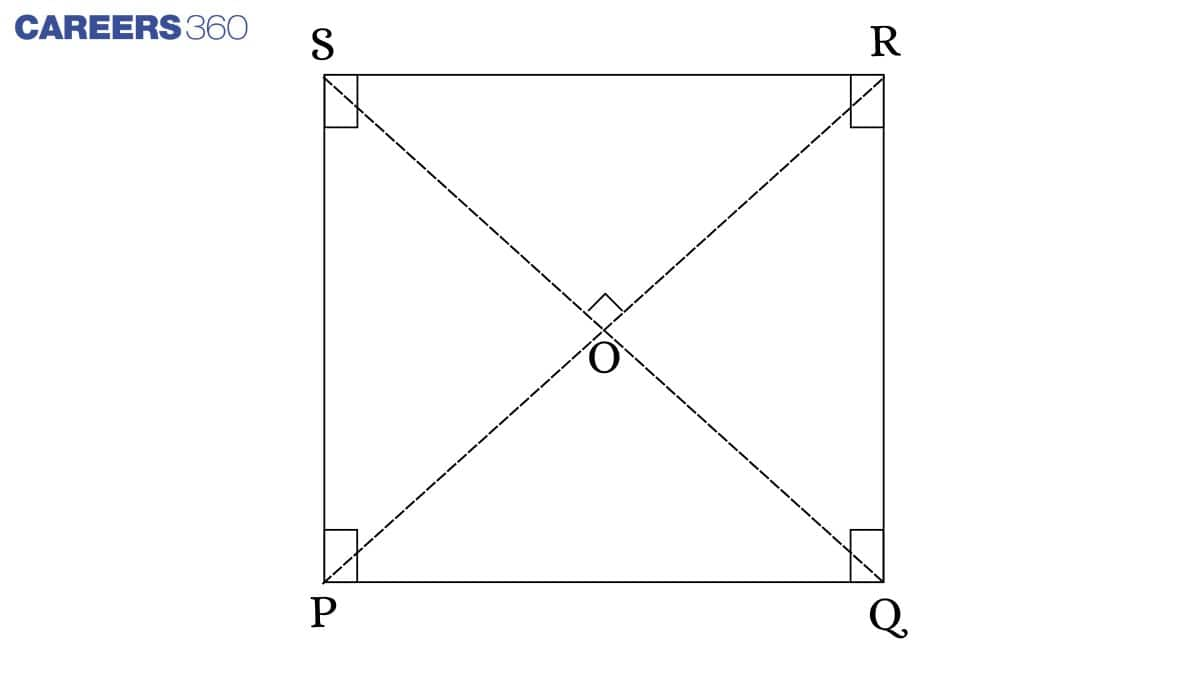
In ΔPRS and ΔPQR,
PS = QR (Opposite sides of a Square)
RS = PQ (Opposite sides of a Square)
PR = PR (Common side)
∠PQR =∠PSR (Each angle of the square is 90°)
ΔPRS ≅ΔPQR (By SAS rule)
Therefore, PR = SQ (Corresponding parts of congruent triangles)
Now in ΔPOS and ΔPOQ,
PS = RQ (Opposite sides of a square)
∠PSO =∠OQR (∵ PS || RQ)
∠SPO =∠ORQ (∵ SR || PQ)
ΔPOS ≅ΔPOQ (By ASA rule)
∴PO = OR (Corresponding parts of congruent triangles)
Similarly, we can prove SO = OQ
In ΔPSO and ΔPOQ,
OP = OP (Common side)
SO = OQ (Already proved)
PS = PQ (Side of square)
ΔPSO ≅ΔPOQ (By SSS rule)
∴∠POQ = ∠POS (Corresponding parts of congruent triangles)
Now, ∠POS +∠POQ =180° (Angle in a line is equal to 180°)
∴∠POS = ∠POQ = 90°
The Mid-Point Theorem
The line segment joining the midpoints of two sides of a triangle is parallel to the third side and is half of the third side.
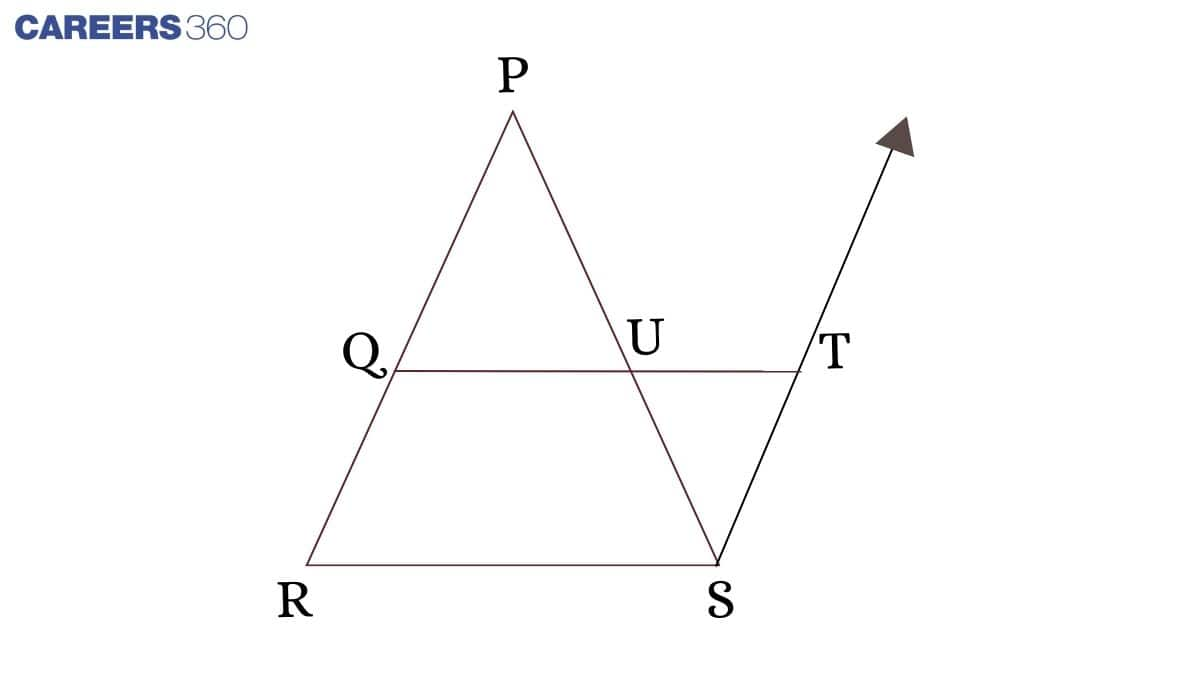
In ΔPRS, Q is the midpoint of U; U is the midpoint of PS.
Draw a line QU to T such that QU = UT
In ΔPQU and ΔUST,
∠PUQ = ∠TUS (Vertically opposite angles)
PU = US (U is the midpoint of PS)
QU = UT (From construction)
∴ΔPQU ≅ΔUST (By SAS rule)
Therefore,
∠QPU =∠TSU….(1)
PQ = TS = QR (Q is the midpoint of PR)
TS || PQ || PR (From equation (1))
TS || RQ
Therefore, QRST is a parallelogram.
Therefore, RS = QT and RS || QT
Therefore QU || RS
How to Use the Quadrilaterals Class 9 Notes Effectively?
Quadrilaterals become easy when we learn the properties of parallelograms and understand how the mid-point theorem works. This chapter needs clear diagrams and regular practice to remember the rules. When we revise efficiently, the concepts stay in our minds for a long time. Class 9 Maths chapter 8 notes help us do that. Here are some more points on how these notes are important.
- Read the properties of parallelograms and draw small diagrams to understand how opposite sides and angles behave.
- Practise the mid-point theorem with simple examples so we clearly see how it works in different figures.
- Keep the NCERT Class 9 Maths chapter 8 notes with you while solving textbook questions to check steps and avoid confusion.
- Use the NCERT Class 9 Maths chapter 8 notes to build a strong base, because these ideas help us again in higher classes, especially in coordinate geometry and proof-based geometry.
NCERT Class 9 Maths Notes – Chapter-Wise Links
We at Careers360 compiled all the NCERT class 9 Maths notes in one place for easy student reference. The following links will allow you to access them.
|
NCERT Notes for Class 9 Maths Chapter 4 Linear Equations in Two Variables |
|
NCERT Notes for Class 9 Maths Chapter 5 Introduction to Euclid’s Geometry |
|
NCERT Notes for Class 9 Maths Chapter 8 Quadrilaterals |
|
NCERT Notes for Class 9 Maths Chapter 11 Surface Areas and Volumes |
NCERT Solutions for Class 9
Students must check the NCERT solutions for Class 9 Maths and Science given below:
NCERT Exemplar Solutions for Class 9
Students must check the NCERT exemplar solutions for Class 9 Maths and Science given below:
NCERT Books and Syllabus
As students step into a new class, they must first explore the latest syllabus to identify the chapters included. Below are the links to the most recent syllabus and essential reference books.
Courses After 12th
Applications for Admissions are open.
As per latest syllabus. Physics formulas, equations, & laws of class 11 & 12th chapters
JEE Main Important Chemistry formulas
Get nowAs per latest syllabus. Chemistry formulas, equations, & laws of class 11 & 12th chapters
JEE Main high scoring chapters and topics
Get nowAs per latest 2024 syllabus. Study 40% syllabus and score upto 100% marks in JEE
JEE Main Important Mathematics Formulas
Get nowAs per latest syllabus. Maths formulas, equations, & theorems of class 11 & 12th chapters
